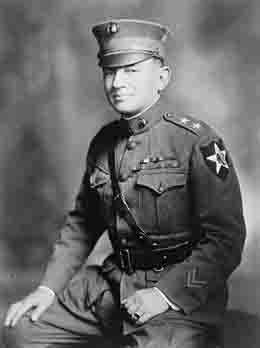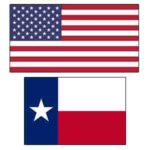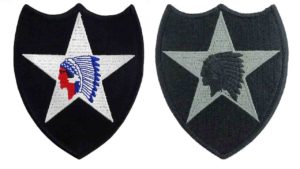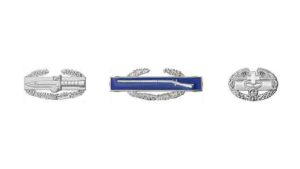2nd Infantry Division (2ID) Unit Patch
The 2nd Infantry Division patch has a long, proud, and honorable history. It is one of the most decorated units in the United States Army. 2nd Infantry Division combat history spans four wars (World War I, World War II, Korean War, and the Global War on Terrorism) along with an important role in preemptive defense. In fact, there have been 40 Medal of Honor recipients, and over 20 campaign participation credits under the 2nd Infantry Division patch.

The History of the 2nd Infantry Division Patch
The Second Infantry Division patch, with its distinctive design, represents nearly a century of proud service by it’s “Warriors”. One can trace the origin of the patch all the way back to the earliest days of the division’s history. The story begins with an observation made by Colonel William F. Herringshaw, a Distinguished Service Medal recipient, during training with the French in 1917. Colonel Herringshaw was in command of the service and support supply units of the Second Infantry Division when he noticed that the vehicles that the French used were marked with symbols that represented the unit to which each belonged.

Colonel Herringshaw concluded that this form of identification was an excellent idea. He soon sponsored a contest among his men to design a symbol for his trucks. The resulting design became the foundation for the 2nd Infantry Division patch. According to the accounts of the event, there were three winning ideas:
- One design featured an Indian head
- Another design featured a plain white star
- The third design is a mystery as it has been lost to history.
Having not been completely satisfied with any one concept, Colonel Herringshaw reportedly decided that the indian head and star designs should be combined into one design. The indian head within the star design was born. You can see how this design looks on your wall by clicking here.
Approval of the Initial Second Infantry Division Patch Design
 The design concept was sent to command headquarters for approval. Brigadier General Omar Bundy was the Division Commander at that time. He served on the American frontier and participated in the Indian Wars campaigns against the Crow and Sioux Indians. He also fought during the Spanish–American War with the 5th Army Corps in Cuba, receiving the Silver Star for gallantry at the Battle of El Caney. General Bundy not only approved the design but he took it one step further. He ordered that the design be put on his staff car!
The design concept was sent to command headquarters for approval. Brigadier General Omar Bundy was the Division Commander at that time. He served on the American frontier and participated in the Indian Wars campaigns against the Crow and Sioux Indians. He also fought during the Spanish–American War with the 5th Army Corps in Cuba, receiving the Silver Star for gallantry at the Battle of El Caney. General Bundy not only approved the design but he took it one step further. He ordered that the design be put on his staff car!
 In October of 1918, the 2nd Infantry Division received a new commander, Major General John A LeJeune. A little known fact is that, at this time, a Marine Corps General was assigned to command an Army division. General LeJeune ordered that size and shape of the 2nd Infantry Division patch be changed to include a background color that represented the different divisional units. He also directed that the Indianhead design be modeled after the Indian on the $10 gold piece.
In October of 1918, the 2nd Infantry Division received a new commander, Major General John A LeJeune. A little known fact is that, at this time, a Marine Corps General was assigned to command an Army division. General LeJeune ordered that size and shape of the 2nd Infantry Division patch be changed to include a background color that represented the different divisional units. He also directed that the Indianhead design be modeled after the Indian on the $10 gold piece.

The 2nd Infantry Division Patch “Star”
 There are two opposing theories regarding the single star. One theory is that the star is derived from the “lone star” representing the state of Texas and present on the various Texas flags. In that context, the star signifies independence. The other theory is that the star was taken from the United States Flag. In either case, the white star is a five-pointed star with point up.
There are two opposing theories regarding the single star. One theory is that the star is derived from the “lone star” representing the state of Texas and present on the various Texas flags. In that context, the star signifies independence. The other theory is that the star was taken from the United States Flag. In either case, the white star is a five-pointed star with point up.
The 2nd Infantry Division Patch “Indian Head”
 As mentioned, the Indian Head on the current 2nd Infantry Division patch design was derived from the $10 gold piece known as the Indian Head eagle (the term eagle represented a ten dollar value). The Indian Head eagle was a $10 gold piece or “eagle” that was struck by the United States Mint continuously from 1907 until 1916, and then irregularly until 1933. One side featured a left-facing bust of Liberty wearing an Indian feather headdress with 13 stars surmount the design. The other side of the coin featured an eagle standing on a sheaf of arrows encircled by an olive branch.
As mentioned, the Indian Head on the current 2nd Infantry Division patch design was derived from the $10 gold piece known as the Indian Head eagle (the term eagle represented a ten dollar value). The Indian Head eagle was a $10 gold piece or “eagle” that was struck by the United States Mint continuously from 1907 until 1916, and then irregularly until 1933. One side featured a left-facing bust of Liberty wearing an Indian feather headdress with 13 stars surmount the design. The other side of the coin featured an eagle standing on a sheaf of arrows encircled by an olive branch.
2nd Infantry Division Patch Specifications
The 2nd Infantry Division patch is one of the largest of all of the United States Army patches. It is of a “shield” shaped design. Historically, a shield shape represents the concept of protection. Other lesser known meanings of the shield shape relate to security, power or control, strength, and protection. The colored patch features the shield in black which is the same for the subdued Army Combat Uniform (ACU) version.
The star design of the 2nd Infantry Division patch is a five-pointed (point up) white star on the colored version. The subdued version features the star in green.
The indianhead design that is situated in the center of the star includes the colors of the United States Flag (red, white, and blue) on the colored version. Meanwhile the indianhead on the subdued patch is black with the image being detailed through the use of stitching techniques.
Both the colored (Class A) and subdued (ACU) patches are sized at 3.5″ wide and 4.25″ tall.

An interesting take on the design “A Living Patch”
 Photographers, originally took this type of a unique photo of soldiers 2nd Infantry Division in 1925. The soldiers completed the complicated task of arraying themselves into a formation that created the image of the 2nd Infantry Division Patch. The original photo has been displayed at the 2nd infantry Division Museum in located in North Uijeongbu, Korea. The 2nd Infantry Division Museum keeps a collection of artifacts and historic photos on display that relate to the Division’s history since its formation during WWI. The subjects of the works continue on through displays of today’s Warriors guarding Freedom’s Frontier.
Photographers, originally took this type of a unique photo of soldiers 2nd Infantry Division in 1925. The soldiers completed the complicated task of arraying themselves into a formation that created the image of the 2nd Infantry Division Patch. The original photo has been displayed at the 2nd infantry Division Museum in located in North Uijeongbu, Korea. The 2nd Infantry Division Museum keeps a collection of artifacts and historic photos on display that relate to the Division’s history since its formation during WWI. The subjects of the works continue on through displays of today’s Warriors guarding Freedom’s Frontier.
In 2009, 2nd Infantry Division soldiers gathered once again to replicate the historic patch. They repeated the process of coming together and organizing themselves in the precise positions necessary to create a detailed image of the emblem that represents their unit. The gathering successfully resulted in a new photo of the “Living Insignia of the 2nd Infantry Division Patch”. This time, it included members of a new generation. The new photo will provide another link in the chain of the historic and extraordinary heritage of the Indianhead Division.
Check out the 2nd Infantry Division Wall Art!








